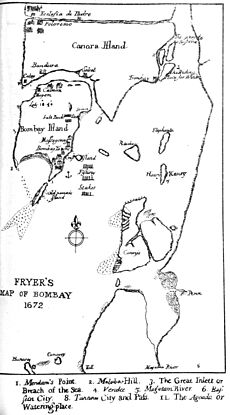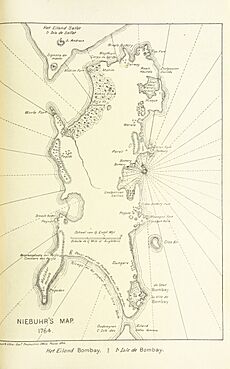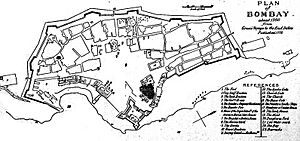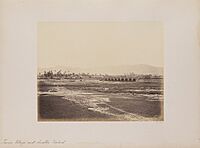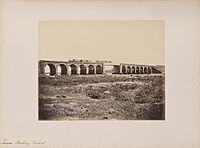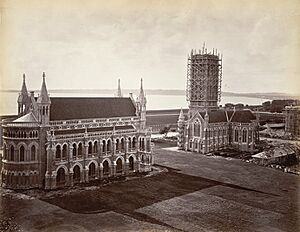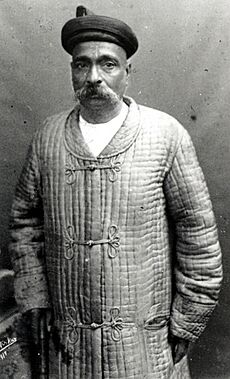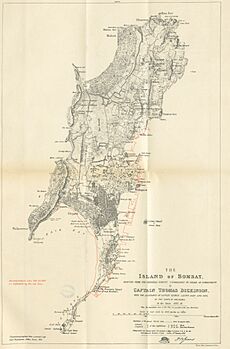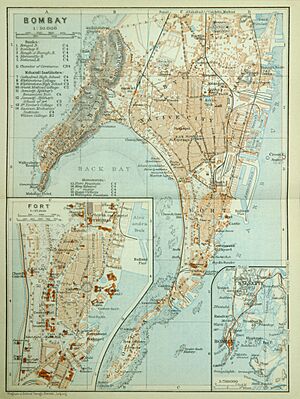History of Bombay under British rule (1661–1947) facts for kids

Bombay, also known as Bom baim in Portuguese, is a very important city in India. It's the country's financial and business center. It is also one of the most crowded cities in the world.
Long ago, Bombay was not one big landmass. It was an archipelago of seven separate islands. The Portuguese got these islands from Sultan Bahadur Shah of Gujarat in 1534. Later, the islands became part of the dowry for Catherine of Braganza. She was the daughter of King John IV of Portugal. When she married Charles II of England in 1661, the islands were given to England.
The English King Charles II found the islands expensive to keep. So, in 1668, he leased them to the English East India Company. The company paid a small rent of £10 each year.
Contents
Early Days of the Company (1661–1817)
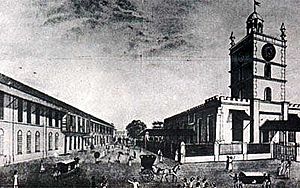
In 1665, King Charles II of England gave Bombay to Humphrey Cooke. But many nearby islands like Salsette were still held by the Portuguese. Cooke managed to get some more islands for the English. In 1668, Bombay was officially transferred to the English East India Company. They paid £10 a year for it.
Sir George Oxenden became the first governor under the Company. Then, Gerald Aungier became governor in 1669. He helped Bombay grow a lot. He set up a mint to make coins and a printing press. He also encouraged many different communities to move to Bombay. These included Gujaratis, Parsis, and Jews. In 1673, the Dutch East India Company attacked Bombay, but Aungier defended it. A peace treaty between England and Holland ended the threat.
In 1682, the Company built a fort on the Middle Ground isle. This helped stop pirates in the area. However, between 1678 and 1682, Yakut Khan, an admiral from the Mughal Empire, attacked and burned parts of Bombay. By 1689, he had taken over most of the island. He even destroyed the Mazagon Fort. The English had to pay the Mughal ruler Aurangzeb to make Yakut leave. He finally left Bombay in 1690.
In 1715, the Bombay Castle was finished. This made the island stronger against attacks from the Portuguese and Mughals. In 1718, Governor Charles Boone built the St. Thomas Cathedral. This was the first Anglican church in Bombay.
By 1737, the Maratha Empire captured Salsette Island. They took most of the Portuguese areas in Bombay by 1739. In 1753, the Naval Dockyard opened. It is still one of the oldest docks in the city. The British took Salsette in 1774. It was officially given to the British East India Company in 1782.
In 1782, William Hornby became governor. He started a big project called the Hornby Vellard. This project aimed to connect the separate islands of Bombay. The Sion Causeway, another connecting project, was built between 1798 and 1803. In 1803, a severe famine hit Bombay, causing many people to leave. Finally, in 1817, the British East India Company defeated the Maratha Empire. This made Bombay safe from attacks by local powers.
City Growth and Development (1817–1886)
After 1817, Bombay began to grow rapidly. The Hornby Vellard project, which connected the islands, gained speed. In 1819, the Wellington Pier (now the Gateway of India area) opened for passengers. This helped trade a lot.
In 1838, the islands of Colaba and Little Colaba were connected to Bombay. This was done by building the Colaba Causeway. The Bank of Bombay opened in 1840, becoming the city's oldest bank. By 1845, all seven islands were connected. They formed one large island called Old Bombay. The Mahim Causeway, connecting Mahim to Bandra, was also finished in 1845. The Grant Medical College and hospital, an important medical school, was founded in 1845.
On April 16, 1853, India's first railway line started running. It connected Bombay to Tanna, a distance of 21 miles. This was a huge step for transportation.
The first cotton mill in Bombay opened in 1854. This started a big textile industry. In 1857, the University of Bombay was founded. It was one of the first modern universities in India. More railways, like the Great Indian Peninsular Railway, started in 1860.
When the American Civil War began in 1861, the demand for cotton increased. This made Bombay's cotton trade boom. In 1869, the Suez Canal opened. This made sea travel much faster between Europe and Asia. It greatly boosted Bombay's trade. In 1870, the docks were organized under the Bombay Port Trust. The Bombay Municipal Corporation was set up in 1872. This gave the fast-growing city a modern way to govern itself. Tramways also started in 1872, making it easier to get around. Public gardens like Victoria Gardens opened, giving people places to relax.
Bombay became one of the few cities with a large national park inside its limits. The Bombay Natural History Society was founded in 1883. In 1885, the Princess Dock was built to improve the harbor.
Political Awareness and Independence (1885–1947)

People in Bombay started becoming more politically aware after 1885. The Indian National Congress was founded in 1885. This was a very important political event in Bombay. The first meeting of the Congress was held in Bombay in December 1885. In 1888, the Victoria Terminus railway station was completed. It was one of the most beautiful stations in the world.
In 1896, a serious bubonic plague hit Bombay. Thousands of people died. Many others fled the city. This led to strikes by dock and railway workers, which stopped the city for a few days. The plague also led to the creation of the Bombay City Improvement Trust in 1898. The Haffkine Institute was founded in 1899 to study diseases.
The Partition of Bengal in 1905 started the Swadeshi movement. This movement encouraged people to boycott British goods. It had a big impact on Bombay. In 1908, Bal Gangadhar Tilak, a leader of the Swadeshi movement, was jailed. This caused huge protests in the city. The Bombay Chronicle newspaper, started in 1913, played a key role in the independence movement.
In 1915, Mahatma Gandhi visited Bombay. This was a very important event. The Home Rule League, which wanted self-governance for India, was started by Annie Besant and Tilak in 1916. During World War I, Bombay was a vital base for British military efforts.
From September to December 1918, a worldwide influenza epidemic hit Bombay. It caused hundreds of deaths every day. In 1919, a major strike happened in Bombay's textile industry. Bombay was also a main center for Mahatma Gandhi's Rowlatt Satyagraha movement. This movement protested against a law that limited public freedom.
After World War I, the city saw many shutdowns during the Non-Cooperation Movement (1920-1922). In 1927, electric trains started running from Bombay to other cities. In the late 1920s, many Persians moved to Bombay to escape drought in Iran. In the early 1930s, the Civil disobedience movement against the British Salt tax spread to Bombay.
On October 15, 1932, J.R.D. Tata started civil aviation in Bombay. He flew a plane from Karachi to Bombay. Bombay was affected by the Great Depression of 1929. This caused problems for the mill industry and the economy.
During World War II, Bombay became an important military base. Thousands of troops and supplies moved through the city. The Royal Indian Navy was also based there. On August 7, 1942, the Quit India rebellion was announced in Bombay. This was a major call for India's independence.
On February 18, 1946, the Royal Indian Navy Mutiny happened in Bombay. This was a serious revolt by Indian sailors against British rule. Finally, on August 15, 1947, India became independent. The last British troops left India from Bombay on February 28, 1948. This ended 282 years of British rule in Bombay.
See also


